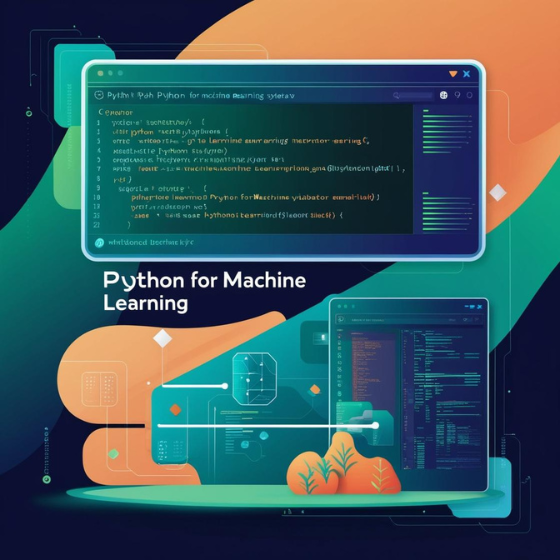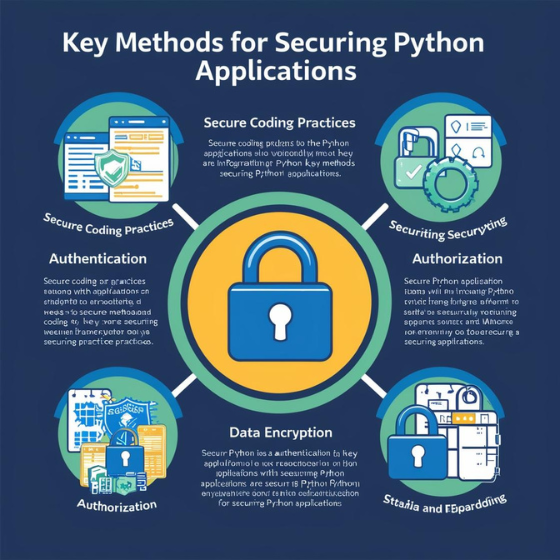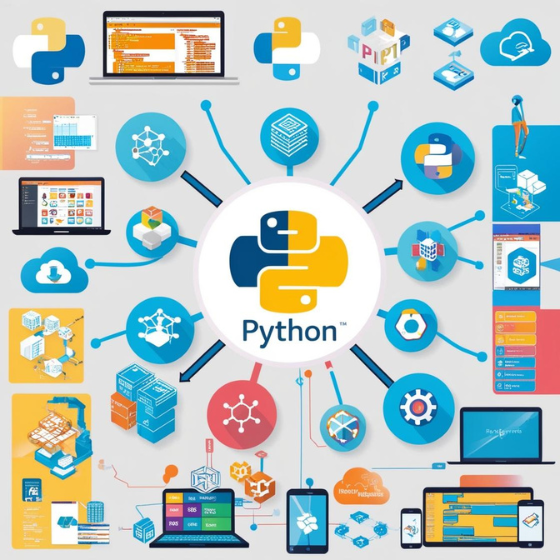Introduction
Python has emerged as one of the most popular programming languages for machine learning. In fact, a recent survey showed that over 50% of data scientists use Python as their go-to language for developing machine learning models. But what makes Python such a powerful tool for machine learning, and how can you get started using it?
In this blog, we’ll explore how to use Python for machine learning and dive into the essential libraries and frameworks that make it so effective for building predictive models. Whether you’re new to machine learning or want to refine your existing skills, this post will help you understand how Python simplifies and accelerates the machine learning process.
Why Python Is Perfect for Machine Learning
Before diving into the technicalities, let’s understand why Python is the preferred language for machine learning.
- Easy to Learn and Use: Python’s syntax is clean, straightforward, and easy to read, making it an excellent choice for beginners in machine learning. You don’t need to worry about complex syntax or intricate language rules – Python allows you to focus on solving problems.
- Rich Ecosystem of Libraries: Python offers a vast selection of machine learning libraries, including NumPy, Pandas, SciKit Learn, and TensorFlow. These libraries provide ready-to-use functions that can handle data manipulation, model training, and evaluation, significantly reducing development time.
- Great for Data Science and ML Projects: Python is not only powerful for machine learning but also widely used in data analysis and data visualization. This makes it an ideal language for handling the entire machine learning pipeline—from data collection to training models and visualizing results.
- Large and Active Community: Python has a massive community of machine learning experts, data scientists, and developers. This means that there are plenty of resources, tutorials, and support available online to help you along the way.
Key Libraries for Machine Learning in Python
Python’s success in machine learning is largely attributed to the libraries that simplify the process. Below are some of the most widely-used Python libraries for machine learning.
1. NumPy and Pandas
These two libraries are the backbone of data manipulation and preparation in Python.
- NumPy allows you to work with large multi-dimensional arrays and matrices, providing a collection of mathematical functions to operate on these arrays.
- Pandas builds on NumPy and offers data structures such as DataFrames, which make it easier to handle structured data, clean datasets, and manipulate them for machine learning purposes.
Together, they provide the tools needed to preprocess and prepare your data before diving into machine learning algorithms.
2. SciKit Learn
SciKit Learn is one of the most popular Python libraries for implementing machine learning algorithms. It offers a wide range of tools for:
- Classification: Identifying the category of a data point (e.g., spam or not spam).
- Regression: Predicting continuous values (e.g., house prices).
- Clustering: Grouping data into similar categories (e.g., customer segmentation).
- Dimensionality Reduction: Reducing the number of features in a dataset while preserving important information.
SciKit Learn is great for beginners because of its simplicity and ease of use. You can quickly implement a wide variety of machine learning models, from basic ones like Logistic Regression to more complex models like Random Forests and Support Vector Machines.
3. TensorFlow and Keras
For more advanced machine learning tasks, especially deep learning, TensorFlow and Keras are the go-to frameworks in Python.
- TensorFlow, developed by Google, is an open-source framework used to build complex neural networks and deep learning models. It supports both CPU and GPU computation, making it scalable for large datasets.
- Keras is a high-level neural network API built on top of TensorFlow. It simplifies the process of building and training deep learning models with an intuitive interface.
These frameworks are essential when working on tasks such as image recognition, natural language processing, and speech recognition.
Steps to Use Python for Machine Learning
Now that you have an understanding of why Python is the best tool for machine learning and the key libraries to use, let’s look at the steps to get started with your own machine learning project.
Step 1: Install Python and Set Up Your Environment
To use Python for machine learning, the first step is installing Python on your machine. You can download the latest version of Python from python.org. For managing libraries and dependencies, you can use pip (Python’s package installer) or Anaconda, a Python distribution with built-in support for data science.
Once installed, you’ll need to install the essential machine learning libraries, such as NumPy, Pandas, SciKit Learn, and Matplotlib for visualization. Using pip, you can install these libraries quickly
Step 2: Prepare Your Data
Data preparation is one of the most important steps in machine learning. You’ll need to collect data that is relevant to your problem, clean the data (removing missing values and outliers), and preprocess it to ensure it’s in the correct format for model training.
Some common tasks during this step include:
- Data Cleaning: Removing or imputing missing values.
- Feature Engineering: Creating new features that could improve model performance.
- Data Normalization: Scaling features so they have similar ranges (important for some models).
Python’s Pandas library is particularly useful during this stage, as it provides easy-to-use functions for data manipulation.
Step 3: Choose a Machine Learning Model
Once your data is ready, you can start choosing a machine learning algorithm to build your model. The choice of algorithm depends on your problem type:
- For classification problems, you might start with Logistic Regression or Random Forest.
- For regression, Linear Regression or Support Vector Machines are good options.
- If you are dealing with unsupervised learning, you might use K-means clustering or Principal Component Analysis (PCA) for dimensionality reduction.
SciKit Learn makes it easy to apply a variety of machine learning algorithms with just a few lines of code.
Step 4: Train and Evaluate Your Model
After selecting your model, the next step is to train it using your training dataset. The model will learn from the data, adjusting its internal parameters to make accurate predictions.
Once your model is trained, you need to evaluate its performance using a separate test dataset. This helps ensure that the model can generalize well to unseen data. Common evaluation metrics include accuracy, precision, recall, and F1-score for classification problems, and mean squared error (MSE) for regression.
Step 5: Improve Your Model
Model training doesn’t stop after the first evaluation. It’s often necessary to iterate and refine the model for better performance. Some strategies to improve your model include:
- Hyperparameter tuning: Adjusting the parameters of your model to find the best configuration.
- Cross-validation: Using techniques like k-fold cross-validation to better evaluate the model’s performance.
- Feature selection: Identifying and using the most important features for the model.
Conclusion
In this guide, we’ve explored how to use Python for machine learning, from setting up your development environment to building, training, and optimizing machine learning models. Python’s versatility, ease of use, and rich ecosystem make it the go-to language for machine learning projects.
Whether you’re just getting started or looking to improve your machine learning skills, Python provides all the tools you need to build powerful models that can solve real-world problems.
Interested in leveraging Python for your machine learning project? Explore Sodio’s Machine Learning services and get in touch with our team to turn your ideas into reality.







